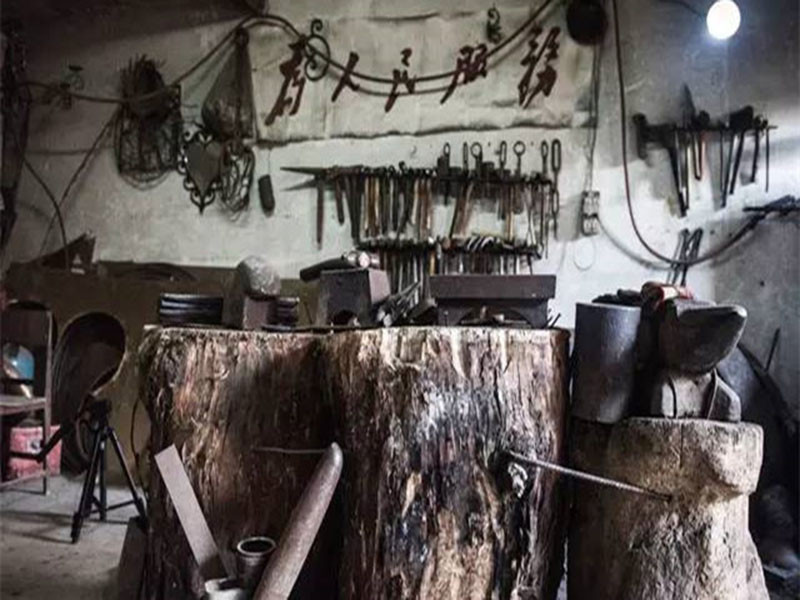Blacksmiths refer to artisans who used iron as raw materials to forge ironware in the old days. They can use a small hammer in their hands to create a variety of iron products, such as iron plows, kitchen knives, scissors knives, etc., which were used by farmers in the past. Most of the farming tools are made by blacksmiths. Therefore, the countryside is also the area where blacksmiths are most active. The old blacksmiths can be divided into two types. One type of blacksmith has its own shop, and the other type of blacksmith travels north and south, walking the streets and alleys, soliciting business everywhere. Usually a blacksmith shop is run by an experienced blacksmith with two or three apprentices. There is a stove for burning iron in the shop. One end of the stove is connected to a bellows, and the temperature of the fire can be controlled by pushing and pulling the bellows. And heat. Whenever he receives a job, the old blacksmith arranges one apprentice to burn the fire, and the other apprentice to make the billet. The apprentices work together to burn the billet in the furnace, and then use a big hammer to initially beat it. Make the desired shape.
In this process, every step of the little blacksmith needs to be completed under the guidance of the old blacksmith. The old blacksmith will hold a small flat-headed hammer and point on the iron ring, and the little blacksmith will point according to the teacher. When the sledgehammer is swung at the position of the iron billet, the little blacksmith must quickly hammer it while the iron billet is burning red. After working hard, it was the old blacksmith's turn to take the initiative. The tools he used mainly included hammers of different sizes, iron clamps for holding billets, and anvils for placing billets. When ironing, the blacksmith will fix the iron billet made by the apprentice on the anvil with an iron clamp, and then select a hammer of the appropriate size to slowly strike it. This step requires "slow work and fine work". The blacksmith's craftsmanship and Technology is also reflected in this beating process. In the process of making the old blacksmith, the young blacksmith also needs to burn the fire again and prepare a basin of cold water. After the master is done, he will put the iron in the fire again to reden, and then take it out and quickly soak it. Quickly cool down in cold water. This step is called "fire" by the blacksmith. Its purpose is to make the ironware after making a higher hardness and prolong its service life.
If it is to make knives, a process of "sharpening the knife" is needed after melting the fire. The blacksmith grinds the knives with a sharpening stone until they are sharp before they can be sold. Every ironing process requires the unity and cooperation of old blacksmiths and apprentices to complete. Young blacksmiths often start to learn from the burning of fire, slowly observe and get in touch with the process of hammering quickly, and after they are skilled, they can take up the work of iron blanking. In this way, after several years or even ten years of practice and study, he can serve as the final master hammer job. In the blacksmith shop, the apprentice is usually the relative or close friend of the blacksmith. The craft of ironing has been passed down from generation to generation. All my belongings are packed inside. This kind of wheelbarrow has a large carriage mounted on the wheels, and the middle wheel is wrapped in wooden slats. The carts are usually a father and a son or a master and apprentice. They just push around with bellows, anvils, iron clamps, hammers of various specifications and other daily necessities such as rice, noodles, grain, and oil. If someone hires a blacksmith to strike iron, they will start the furnace at the right place, first mix the soil and refractory sand into mud, and then start the furnace on the special pan tool, which is a square iron
